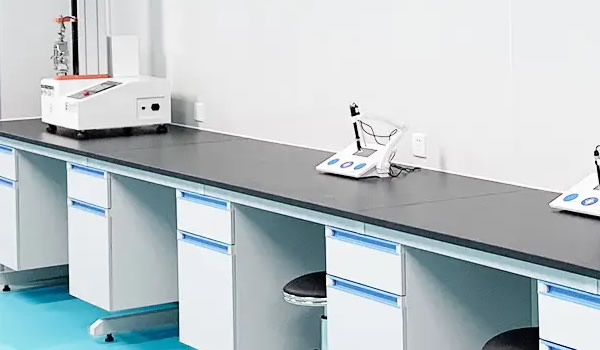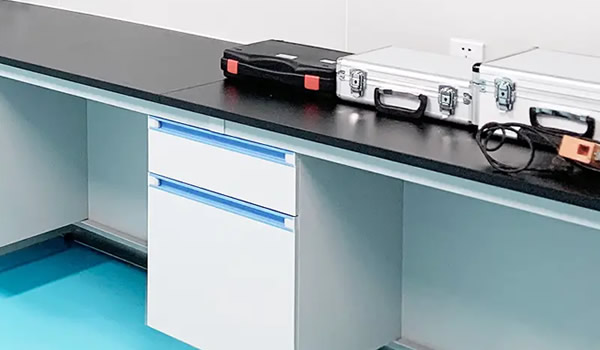Depression is one of the most common mental health conditions in Asia, yet it often goes unrecognized or untreated due to stigma, limited access to care, and cultural norms that discourage open discussion of emotions. This comprehensive guide explains what depression is (and isn’t), how it presents in Asian contexts, the full range of evidence-based treatments, and practical steps patients and families can take—at home, at work, and with professionals—to recover safely and reduce relapse. The content is educational and does not replace medical care.

What depression is—and isn’t
Depression (major depressive disorder, MDD) is a medical condition marked by persistent low mood and loss of interest or pleasure, often accompanied by changes in sleep, appetite, concentration, energy, and self-worth. It is different from normal sadness: symptoms are more intense, last most of the day, nearly every day, and impair daily functioning at work, in studies, or in relationships. Related conditions include persistent depressive disorder (a chronic, milder but longer-lasting form), perinatal/postpartum depression, seasonal patterns, and depression that occurs with bipolar disorder (which alternates with periods of elevated mood).
In Asian settings, depression frequently presents with somatic complaints—headaches, stomach discomfort, back pain, fatigue—rather than explicit statements like “I feel depressed.” Understanding this cultural expression helps families and clinicians spot problems earlier.
Why depression is rising across Asia
- Urbanization and work culture: Long commuting times, intense academic competition, and “always online” office expectations amplify chronic stress.
- Demographics: Rapid aging increases the number of people vulnerable to late-life depression (linked to isolation, chronic disease, bereavement).
- Migration and caregiving: Cross-border or rural-to-urban migration separates families; many middle-aged adults support both children and aging parents.
- Digital overload: High screen time, sleep disruption, and social comparison on apps can worsen mood.
- Under-resourced services and stigma: Limited access to trained professionals and a tendency to normalize suffering delay treatment.
Core symptoms and red flags
Common symptoms (you do not need all of them):
- Persistent sadness, emptiness, or irritability
- Loss of interest in previously enjoyable activities
- Fatigue or low energy; “everything feels heavy”
- Sleep changes (insomnia or excessive sleeping)
- Appetite changes and weight loss/gain
- Difficulty concentrating, slowed thinking or restlessness
- Feelings of worthlessness, guilt, or hopelessness
- Physical complaints without clear medical cause (pain, digestive issues)
- Thoughts of death or suicide
Seek urgent help immediately if there are thoughts of self-harm, plans, or intent. Use local emergency numbers or go to the nearest hospital; stay with the person, remove lethal means if safe to do so, and contact trusted family or friends.
Screening and diagnosis
Primary care doctors and mental health professionals commonly use short questionnaires such as PHQ-9 (for depression) and GAD-7 (for anxiety) to screen severity and guide next steps. Screening tools are not diagnoses; clinicians confirm depression through a structured interview, review of medical conditions/medications, and risk assessment (including suicide risk, mania, psychosis, or substance use).
Medical conditions that can mimic depression (thyroid disorders, anemia, sleep apnea, medication side effects) should be ruled out—especially if symptoms appear suddenly or are atypical.

Evidence-based treatment: a stepped-care approach
Treatment is personalized based on severity, duration, past history, risk, and patient preferences. Many recover with a combination of approaches.
1) Psychoeducation and self-care foundations
- Sleep: Aim for a consistent schedule and 7–9 hours. Anchor wake time; avoid screens and caffeine late in the day.
- Activity scheduling: Plan small, achievable activities that align with personal values (behavioral activation). Even 10–20 minutes of walking can lift mood.
- Nutrition and hydration: Regular meals with whole foods; limit alcohol and heavy late-night meals.
- Social connection: Schedule safe, low-pressure interactions—brief phone calls, walks with a friend, or community groups.
- Mind-body practices: Mindfulness, breathing exercises, gentle yoga, and tai chi reduce stress reactivity and rumination.
2) Psychotherapies (talk therapies)
- CBT (Cognitive Behavioral Therapy): Helps identify and modify unhelpful thoughts and behaviors; strong evidence for mild to moderate depression.
- Behavioral Activation: Focuses on rebuilding rewarding, meaningful routines to counter withdrawal.
- Interpersonal Therapy (IPT): Targets grief, role transitions (e.g., becoming a parent), conflicts, and social isolation.
- Mindfulness-based therapies: Reduce relapse by changing the relationship to thoughts and feelings.
- Family-involved approaches: Particularly useful when stigma or somatic presentation dominates; aligns with collectivist cultural values.
Therapy can be delivered face-to-face or via telehealth. In regions with language barriers, look for bilingual clinicians or services offering your preferred language.
3) Medications
Antidepressants (often SSRIs/SNRIs) can be first-line for moderate to severe depression or when psychotherapy is unavailable. Key points:
- Time course: Benefits typically appear after 2–4 weeks, with full effect by 6–8+ weeks.
- Side effects: Nausea, sleep or appetite changes, and sexual side effects are common initially and often ease; report persistent or severe effects to your prescriber.
- Adherence: Do not stop abruptly; taper under medical guidance to avoid discontinuation symptoms.
- Safety with supplements: Some herbal products (e.g., St. John’s wort) interact with antidepressants; discuss any traditional remedies with your clinician to avoid serotonin syndrome or reduced drug efficacy.
- Pregnancy/postpartum: There are safe options; decisions weigh maternal benefits and fetal/neonatal risks. Always involve obstetric and psychiatric care.
4) Combination and next-step treatments
For partial response, clinicians may combine medication with psychotherapy, switch medications, or augment (e.g., add a second agent). For treatment-resistant depression (TRD), options include:
- rTMS (repetitive transcranial magnetic stimulation): Non-invasive brain stimulation with favorable side-effect profile.
- ECT (electroconvulsive therapy): Highly effective for severe depression, psychosis, or urgent suicidality; requires anesthesia and specialist settings.
- Ketamine/esketamine: Fast-acting options for selected patients under strict medical supervision.
Access varies by country; major urban centers are more likely to offer advanced therapies.
Special populations and contexts in Asia
- Students and exam pressure: Teach time-boxing, realistic study plans, and help-seeking norms; screen for co-occurring anxiety.
- Working adults: Advocate for reasonable hours, written priorities, and “focus blocks”; use employee assistance programs where available.
- Perinatal and postpartum depression: Partners and family should learn warning signs (sleep disruption beyond newborn care, intrusive thoughts). Early help protects both parent and infant bonding.
- Older adults: Watch for atypical presentations (memory complaints, slowing, aches); check for bereavement and medical comorbidities.
- Men: Depression may present as irritability, anger, or increased alcohol use; normalize help-seeking.
- Cultural and religious supports: Spiritual practices, community activities, and multigenerational living can be protective when combined with clinical care.
At home and with family: practical steps
- Communication: Use non-judgmental language—“I notice you’ve been quieter and sleeping less; I’m here to help.” Avoid minimizing.
- Daily rhythm: Encourage sunlight exposure in the morning, light movement after meals, and wind-down routines at night.
- Safety planning: Remove or lock away lethal means if there is suicidal risk; identify people to contact and places to go in crisis.
- Caregiver support: Caregivers also need rest and boundaries; short respite breaks prevent burnout.
Work and school accommodations
- Request flexible schedules during acute treatment phases.
- Break large tasks into smaller chunks with clear deadlines.
- Use “single-task sprints” (25–50 minutes) to rebuild concentration.
- If disclosure is safe, involve HR or advisors early; bring a clinician letter summarizing recommended accommodations.
Digital tools: helpful but choose wisely
- Meditation/breathing apps for short daily practice.
- Mood tracking to spot triggers and progress.
- Teletherapy platforms when local access is limited. Select tools that protect privacy, avoid “cure-all” claims, and complement—not replace—professional care.
Preventing relapse
Recovery is more than symptom relief; it’s learning relapse prevention:
- Know your early warning signs (sleep drifting later, skipping meals, withdrawing from friends).
- Keep a simple weekly routine checklist (sleep, meals, movement, social contact, therapy/homework).
- Continue medications for the duration recommended by your prescriber after recovery (often months) to reduce relapse risk.
- Schedule booster therapy sessions after remission (e.g., monthly) and at life transitions.
- Revisit purpose and values; align time with what matters (family, service, learning, creativity).

A 30-day starter plan (adapt as needed)
Days 1–7: Sleep/wake at the same time; 10-minute daily walk; track mood and energy; book an appointment with a clinician; tell one trusted person.
Days 8–14: Begin CBT/BA skills (activity scheduling); add two 20-minute walks or one light workout; prepare easy, regular meals; reduce late-night screens.
Days 15–21: If on medication, check-in for dose review; add one small social interaction; practice 10 minutes of breathing/meditation daily.
Days 22–30: Reassess progress with PHQ-9 or clinician feedback; set a relapse-prevention checklist; plan one enjoyable activity for next week; celebrate small wins.
When to seek urgent care
- Suicidal thoughts with plan or intent
- Severe inability to eat/drink, or not sleeping for days
- New hallucinations or manic symptoms (periods of very high energy, risky behavior, little need for sleep)
Go to emergency services or the nearest hospital immediately and stay with supportive people until you are safe.
Conclusion
Depression is common, treatable, and not a personal failure. In Asia, where stigma and somatic presentations can obscure diagnosis, recognizing signs early and accessing stepped, evidence-based care saves lives and restores functioning. Combining clinical treatments with culturally resonant supports—family, community, and meaningful routines—offers the strongest path to recovery and long-term resilience.